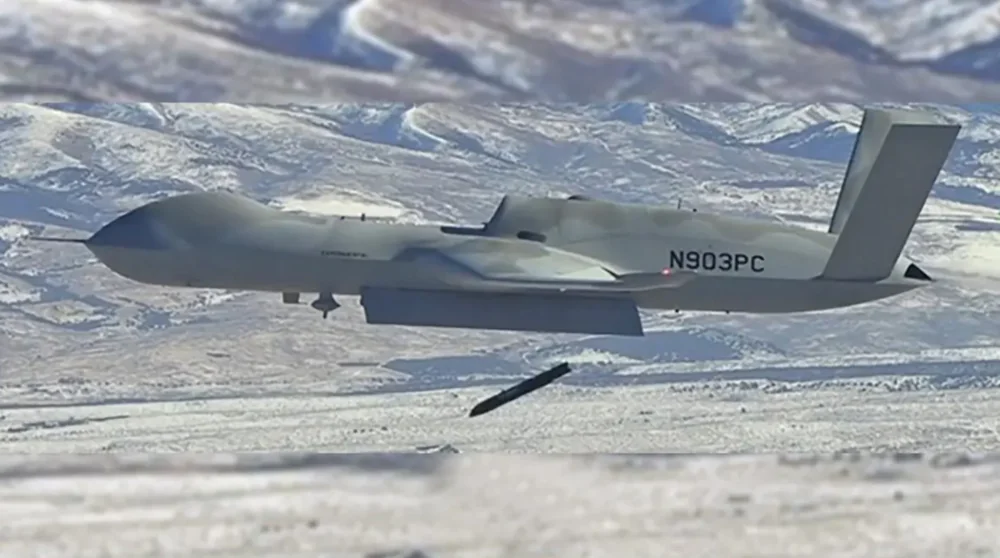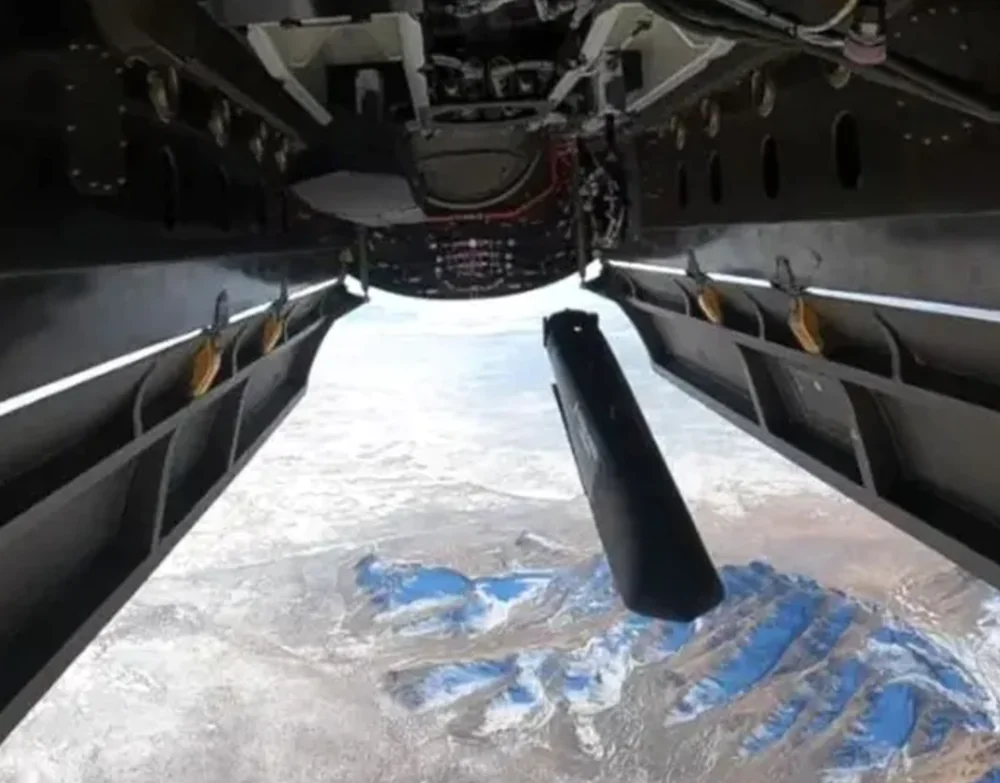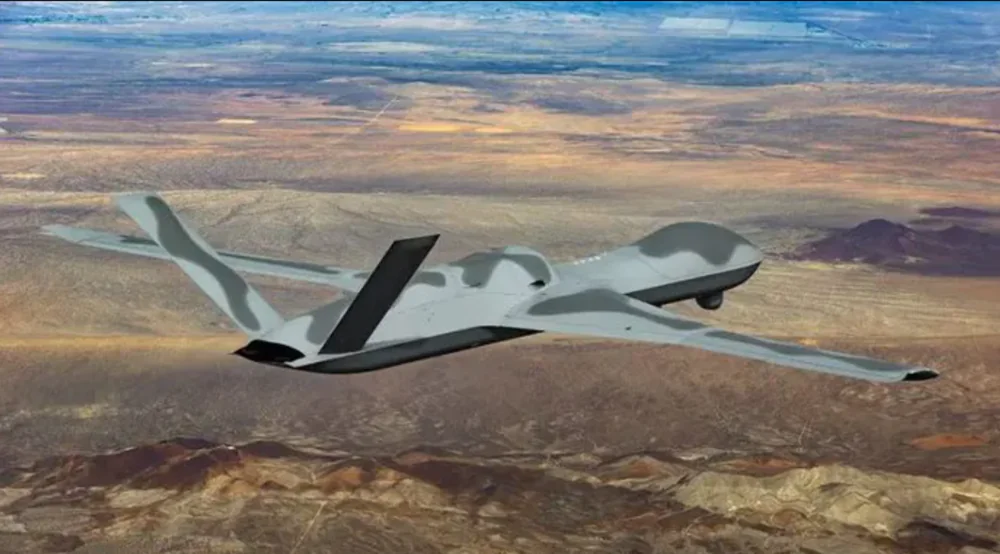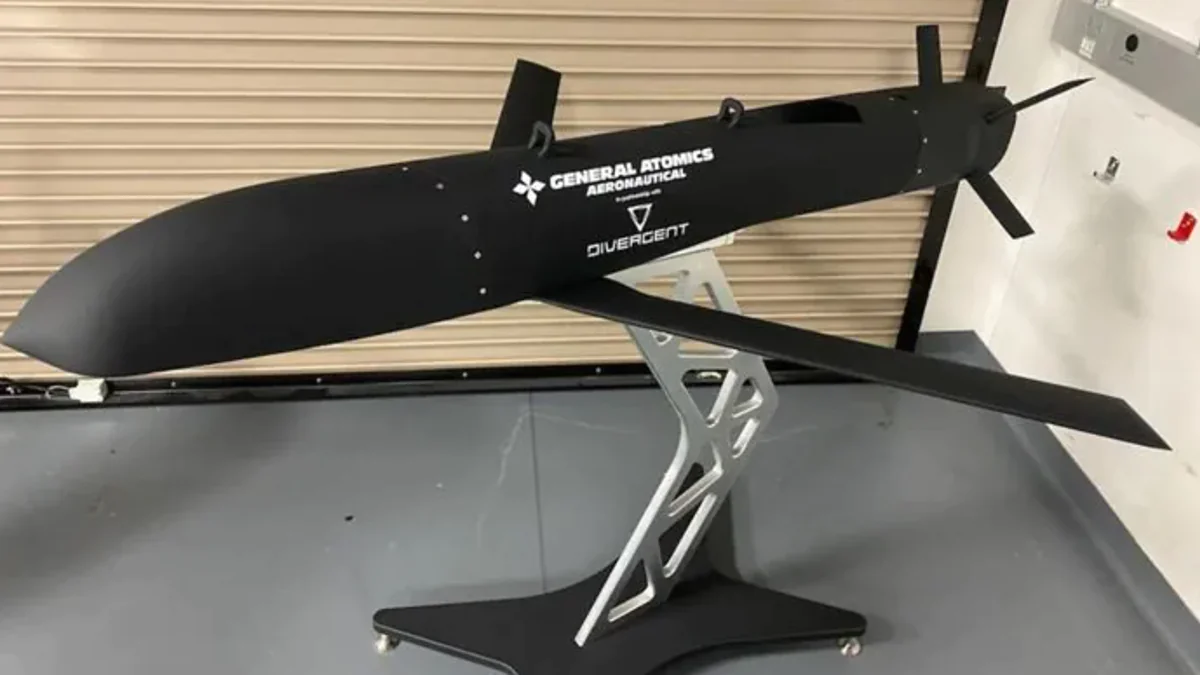General Atomics Aeronautical Systems, Inc. (GA-ASI) has successfully demonstrated its Advanced Air-Launched Effects (A2LE) platform by launching the General Atomics A2LE from the internal weapons bay of the MQ-20 UAV.

General Atomics Aeronautical Systems, Inc. (GA-ASI), along with its contractors, is actively exploring a new concept in unmanned aviation. They are proposing and developing experimental medium-sized UAVs designed to be used as payloads for larger and heavier systems. Several prototypes of this kind have already reached the testing phase, and based on accumulated experience, a new UAV with the working designation A2LE has been created. Recently, it has also entered flight testing.
Read also: Why Airplane Portholes Are Round
TABLE OF CONTENT:
Successful cooperation
In 2022, GA-ASI entered into an agreement with Divergent Technologies to utilize the Divergent Adaptive Production System (DAPS) software-hardware complex. This system creates a unified digital environment designed to facilitate the development and production of new products. Moreover, the system allows for the integration of a wide range of manufacturing technologies, including the latest and most promising ones. DAPS had previously been tested in the automotive industry and other sectors, and General Atomics has begun implementing it in aircraft manufacturing.
It is known that GA-ASI planned to utilize the DAPS complex during the development of a series of small and medium-sized unmanned aerial systems (SUAS) designed for use with larger carrier drones. This direction is generally referred to as Air-Launched Effects (ALE).
The first UAV in the SUAS/ALE series, named Eaglet, was developed, built, and tested in 2023. Subsequently, several more similar models with different designs, characteristics, and capabilities were announced, showcased, and brought to testing. Each of these projects aimed to explore specific ideas and undergo various testing procedures.

Based on the experience gathered over the past year, the Advanced Air-Launched Effects (A2LE) drone project was developed. The first UAV of this model was manufactured in October-November 2023 and subsequently handed over for testing. By the end of November, the unit had undergone the necessary ground checks and was prepared for full-scale flights.
On November 28, 2023, the first flight of the new A2LE drone took place at the Dugway Proving Ground. The MQ-20 Avenger, a heavy multi-role drone also developed by GA-ASI, was used as the primary carrier. The prototype UAV was housed in the internal cargo bay of the carrier. Both UAVs ascended to a designated altitude, after which the smaller A2LE detached from the holder and began its independent flight.
BREAKING: GA-ASI #AvengerUAS tests new aerial recovery system for small unmanned aircraft.
This recovery system will enable our large unmanned aircraft to recover and redeploy smaller ones, like Sparrowhawk, midflight.
Read here: https://t.co/Khf0B0aqFJ pic.twitter.com/yJA4dKMtdc
– GA-ASI (@GenAtomics_ASI) October 10, 2023
The developer company has yet to disclose all the details of the A2LE flight tests. Official statements claim that the flight was successful, though they only used general phrases about the significance of the first flight and the project’s overall prospects. It is hoped that General Atomics Aeronautical Systems, Inc. (GA-ASI) will continue its research and development work and testing while also providing regular updates and sharing information about their progress.
“This demonstration was a decisive first step that showcased GA-ASI’s ability to rapidly develop, manufacture, and test a Small Uncrewed Aerial System (SUAS) using a controlled, low-risk approach,” said Mike Atwood, Vice President of Advanced Programs at GA-ASI. “The A2LE illustrates the combination of GA-ASI’s traditional aircraft design capabilities with Divergent’s DAPS, paving the way for further enhancements of available modular SUAS platforms. These can be adapted to meet the needs of combat missions at significantly lower costs and faster turnaround times than the systems currently in use.”

The company highlights that the A2LE platform provides a low-risk, cost-effective, adaptable solution that delivers a fighter-compatible weight with modular payloads to meet the requirements of current and future mission objectives. This further aligns with the ongoing trend in the unmanned aerial systems sector, as more affordable, modular drone systems are being developed for future multi-domain and joint all-domain command and control scenarios.
For instance, General Atomics states that the A2LE network can establish a persistent, distributed network for surveillance, attack, enemy air defense suppression, or communication pathways, supporting and enhancing the capabilities of current and future manned or unmanned platforms. Similar use cases are envisioned by the U.S. Army, which is actively working on integrating Air Launched Effects into its operations, using the MQ-1C Gray Eagle and Future Vertical Lift aircraft as primary launch platforms.
Read a;so: Why Passenger Planes Don’t Have Parachutes
What are the tactical and technical characteristics and capabilities of the General Atomics A2LE UAV
The A2LE UAV is essentially designed to explore various technical and production solutions, and it should be viewed primarily as a technology demonstrator. This focus is reflected in the technical design and features of the drone. Notably, the UAV is equipped with a complete airframe, propulsion system, and control system, but there has been no information about the presence of any mission-specific equipment on board thus far.
The A2LE’s construction incorporates modern materials and technologies, including extensive use of metallic and plastic components produced through 3D printing. This approach has allowed for optimization of the manufacturing process. On the other hand, by introducing complex shapes to individual elements, high technical performance is achieved.

Externally, the A2LE UAV resembles other aircraft-type drones or cruise missiles. It features an elongated body with a distinctive shape, characterized by smooth curves and sharp edges, which suggest stealth capabilities. The central part of the fuselage houses a folding wing, while the tail section contains the rudder. The exact internal layout of the drone remains unclear, but it is known that a turbojet engine is mounted at the rear.
The dimensions, launch weight, payload capacity, and other specific parameters of the A2LE are still unknown. Similarly, its flight and technical characteristics have not been disclosed. Based on available information, the length of the drone is likely to exceed 1.5-2 meters, with a weight measured in tens of kilograms. Overall, in terms of size and weight, the A2LE is comparable to some modern aerial munitions. Its design indicates a subsonic flight speed, possibly reaching up to 0.8-0.9 Mach.

At this stage, the experimental General Atomics A2LE UAV is equipped with an autopilot and a remote control system. These functionalities are sufficient for testing aspects such as flight on the carrier, separation from it, and similar scenarios. However, more complex testing could be initiated in the future, which may require reconnaissance equipment and other specialized instruments.
During the testing phase, the A2LE is carried by the heavy MQ-20 UAV. The A2LE can be placed either in the internal weapons bay or possibly mounted externally. In the case of internal storage, the Avenger can carry at least two A2LE units onboard. Standard pylon mounts, originally intended for conventional armament, are used for this purpose.
It’s possible that the General Atomics A2LE project may not be limited to simply releasing the UAV from its carrier. Previously, GA-ASI introduced a system for retrieving small UAVs back onto a larger carrier. This system involves deploying a cable with a weight from the larger drone, which the smaller UAV is designed to catch using a specialized grapple mechanism. Once the smaller UAV has caught the cable, the carrier drone would then reel in the cable, pulling the SUAS/ALE back into its internal cargo bay.
Read also:
- F-35B Lightning II Fighters Demonstrate Short Takeoff Capability
- American Reconnaissance Drone RQ-4 Global Hawk Arrives in England for the First Time
What are the prospects for the General Atomics A2LE project?
The primary goal of the current ALE and A2LE projects is to develop and refine technologies that enable effective integration of unmanned aerial vehicles (UAVs) of various classes into a unified system. These projects focus on creating lightweight and compact UAVs that can meet the specifications and constraints of carriers like the large MQ-20 Avenger drone.
At present, General Atomics has demonstrated several such projects and is conducting tests of the developed systems to gain the necessary experience for further refinement. The interest in UAV systems, where a large carrier can accommodate smaller drones, is well-founded. Such systems offer numerous advantages that can be used to perform a variety of combat and support tasks, significantly expanding the tactical capabilities of military air forces.
A small UAV flying on board a carrier can perform various tasks. It can be equipped with optical or electronic reconnaissance equipment. Additionally, it is theoretically capable of carrying some form of weaponry or countermeasures against enemy air defenses.

A system with a UAV carrier and a small UAV that can be deployed and recovered should offer an increased operational range. Having multiple small drones allows the system to perform more actively, such as scouting or attacking several targets simultaneously. Additionally, simpler and cheaper small drones can be sent into hazardous areas, while the larger, more expensive carrier remains out of danger.
The company is confident that, in future scenarios, unmanned assets will be able to autonomously utilize ALE to achieve their objectives. Advances in this field led General Atomics to showcase its autonomy ecosystem in November 2023 on the MQ-20, which is based on open standards and independent of specific hardware for unmanned combat aerial vehicles. The benefits of autonomy were demonstrated in achieving multiple objectives for joint combat missions and completing the “Find, Fix, Track, Target, Engage, and Assess” (F2T2EA) cycle using a combination of live, virtual, and constructive (LVC) entities.
The test flight also showcased the ability to rapidly integrate autonomous unmanned technologies for both the U.S. Navy and the U.S. Air Force. Additionally, it utilized autonomy from three separate sources: government-provided human-machine interface (HMI) hardware, GA-ASI’s autonomy core, and the coordinated operation of these components via Waveform X, an unclassified communication capability of the U.S. government.
Read also: Little-known Pages of Aviation History: Convair F2Y Sea Dart – The Jet-Powered Seaplane Fighter
Is this a new family of UAVs?
Overall, the SUAS/ALE concept has its advantages and is likely to find practical applications. The key now is to complete the current phase of research and experimentation, and to develop deployable systems based on these findings. If the ongoing work on the A2LE continues without unexpected issues or complications, a ready system of this kind could be fielded within the next few years.

Interestingly, the A2LE-based UAV could be just one option for integration; it’s not the only potential model. Previously, GA-ASI developed several similar drones for use with different types of carriers. All these projects could evolve, potentially forming an entire family of unmanned systems based on common principles but with varying characteristics.
We will continue to monitor developments in the SUAS/ALE concept and report on any progress in this area.
Read also:








